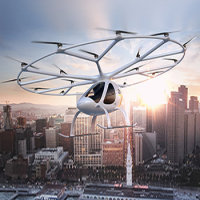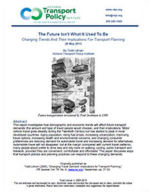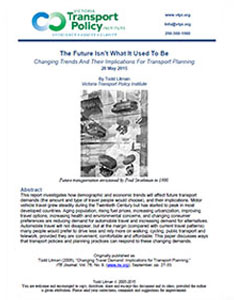The Future Isn’t What It Used To Be
Transportation professionals help create the future so it is important that we consider the overall context of long-term planning decisions.
According to predictions made a few decades ago, current travel should involve self-driving automobiles, jetpacks and flying cars, with space transport a common occurrence.
For example, General Motor’s 1939 Worlds Fair Futurama display predicted that by the 1960s, uncongested, 100-mile-per-hour superhighways would provide seamless travel between suburban homes and towering cities in luxurious, streamlined cars.
In 1961, Weekend Magazine predicted that by 2000, “Rocket belts will increase a man’s stride to 30 feet, and bus-type helicopters will travel along crowded air skyways.
There will be moving plastic-covered pavements, individual hoppicopters, and 200 mph monorail trains operating in all large cities.
The family car will be soundless, vibrationless and self-propelled thermostatically.
The engine will be smaller than a typewriter. Cars will travel overland on an 18 inch air cushion.” According to the 1969 Manhattan City Plan, “It is assumed that new technology will be enlisted in this improved transportation system, including transit powered by gravity and vacuum and mechanical aids to pedestrian movement, such as moving belts or quick-access shuttle vehicles.
These devices almost surely will become available by the end of the century”.
This report investigates how demographic and economic trends will affect future transport demands (the amount and type of travel people would choose), and their implications.
Motor vehicle travel grew steadily during the Twentieth Century but has started to peak in most developed countries.
Aging population, rising fuel prices, increasing urbanization, improving travel options, increasing health and environmental concerns, and changing consumer preferences are reducing demand for automobile travel and increasing demand for alternatives.
Automobile travel will not disappear, but at the margin (compared with current travel patterns) many people would prefer to drive less and rely more on walking, cycling, public transport and telework, provided they are convenient, comfortable and affordable.
This paper discusses ways that transport policies and planning practices can respond to these changing demands.
What’s Related


Favorites





